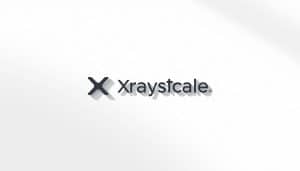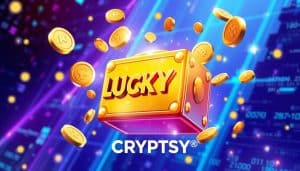The on-chain economy is booming. Total transaction volume has jumped over 50% this year. Major networks now hold more than $70 billion in total value locked (TVL)1.
A new star is rising in decentralized finance (DeFi): tokenized treasuries. They make up 62% of the $13.25 billion in Real World Assets (RWAs) on-chain1. This doesn’t include private credit or stablecoins.
Institutions are driving this growth. They’re pushing to tokenize traditional financial assets. BlackRock CEO Larry Fink sees tokenization as a game-changer for finance.
Key Takeaways
- The on-chain economy has seen exponential growth, with transaction volume and total value locked increasing by over 50% and 70% year-to-date, respectively.
- Tokenized treasuries now account for 62% of the $13.25 billion in Real World Assets (RWAs) on-chain, highlighting their rising prominence.
- Institutional adoption and the push to tokenize traditional financial assets are key drivers behind the rapid growth of tokenized treasuries.
- The World Economic Forum predicts that 10% of global GDP will be on-chain by 2027, underscoring the transformative potential of blockchain technology.
- Tokenized treasuries represent a game-changing collateral solution for the crypto markets, offering increased liquidity, transparency, and accessibility.
Understanding Tokenized Treasuries and Their Functionality
Tokenized Treasuries are digital versions of U.S. Treasury securities on blockchain networks. They allow fractional ownership and increased liquidity for investors. These digital assets map traditional Treasury assets to blockchain tokens1.
What Are Tokenized Treasuries?
Tokenized Treasuries are digital U.S. government debt securities on blockchain. They include Treasury bills, notes, and bonds. These assets offer stability and security of government-backed debt.
Blockchain technology provides transparency and 24/7 trading capabilities. Investors can access these benefits through Tokenized Treasuries.
How Do They Work?
Tokenized Treasuries are created by digitizing physical Treasury instruments. Specialized platforms or custodians hold the underlying securities and issue blockchain-based tokens.
These tokens can be traded and transferred easily. They can also serve as collateral in various decentralized finance (DeFi) applications.
Benefits Over Traditional Instruments
Tokenized Treasuries offer several advantages over traditional Treasury instruments. These include:
- Improved Liquidity: Tokenization enables fractional ownership and 24/7 trading, increasing the overall liquidity of the asset class.
- Reduced Settlement Times: Blockchain-based settlement significantly reduces the time required to execute Treasury transactions.
- Enhanced Accessibility: Tokenized Treasuries provide global investors with easier access to U.S. government debt, lowering barriers to entry.
Smart contracts streamline the management of Tokenized Treasuries. This offers better efficiency and transparency compared to traditional Treasury instruments1.
“Tokenized Treasuries are poised to revolutionize the way investors access and interact with U.S. government debt, unlocking new opportunities in the evolving crypto-finance landscape.”
The Rise of Tokenization in Financial Markets
Tokenization has transformed how assets are accessed, traded, and managed in finance. This approach has evolved from digital currencies to tokenizing real-world assets. It opens new paths for financial innovation, liquidity management, and yield optimization.
Historical Context of Tokenization
Tokenization’s roots lie in cryptocurrencies and blockchain technology. As these technologies grew, the idea of tokenizing assets gained momentum1. This shift was driven by the need for more liquidity and global access to high-value assets.
Key Drivers Behind Tokenization
Several factors fuel the rapid growth of tokenization in financial markets1. The value of tokenized assets has risen by over 50% year-to-date, reaching $13.25 billion. This shows strong demand for this innovative approach1.
The World Economic Forum predicts 10% of global GDP will be on-chain by 2027. This highlights tokenization’s transformative potential1. Tokenization has also enabled new avenues for financial innovation, with platforms like Base experiencing significant growth1.
Base’s on-chain total value locked grew by 470% from January to October 2025. Its market share of total on-chain TVL rose from 1.07% to 3.59%1. Weekly active addresses on Base increased by 2,100% to 6.61 million during this period1.
The broader crypto ecosystem has seen a surge in on-chain activity1. Weekly on-chain active addresses increased by 210% to about 60 million. Weekly transactions grew by over 50%, reaching 482 million1.
Stablecoin trading volumes have also grown significantly. Weekly on-chain stablecoin trading volume increased by more than 177% to $249 billion1. This growth shows the increasing adoption of tokenization in financial markets.
Tokenization has been a game-changer in financial markets. It unlocks new opportunities for innovation, liquidity management, and yield optimization. As tokenized assets integrate with traditional finance, they’re set to reshape the industry’s future1.
Advantages of Tokenized Treasuries in Crypto
Tokenized treasuries are revolutionizing the crypto industry. They offer increased liquidity, enhanced transparency, and lower barriers to entry. These features are crucial for the growth of the crypto ecosystem.
Increased Liquidity
Tokenized treasuries boost liquidity in crypto markets. Investors can trade these assets 24/7 on decentralized exchanges. This allows for seamless access to these financial products1.
On-chain transaction volume has grown significantly. It increased by over 60% to reach 531 million transactions per week by November 20251.
Enhanced Transparency
Blockchain technology powers tokenized treasuries, providing unmatched transparency. Every transaction and ownership record is stored on the distributed ledger. This allows all participants to verify asset integrity and underlying collateral2.
Such transparency builds trust and confidence in crypto markets. This is essential for widespread adoption of these financial instruments.
Lower Barriers to Entry
Tokenization has opened up treasury instruments to smaller investors. They can now purchase fractions of these assets1. This was previously limited to large institutional investors.
As a result, new daily active addresses on the blockchain have surged. They increased by 879% to reach 6.95 million by November 20251.
The tokenized treasury market has grown rapidly. Weekly stablecoin trading volumes rose 177% to $249 billion1. Major financial institutions are focusing on tokenizing real-world assets, including treasuries.
They recognize the potential of this innovation to transform financial instrument management3.
“Tokenization of financial assets is seen as a key step in the technological revolution of financial markets.”
The Role of Smart Contracts in Tokenized Treasuries
Smart contracts are self-executing programs on blockchain networks. They automate the management of tokenized treasuries. These agreements offer enhanced security through cryptographic verification, reducing intermediaries and streamlining processes4.
Automation and Security Benefits
Smart contracts in tokenized treasuries bring major automation benefits. They enable instant settlement and minimize counterparty risk. They also offer programmable compliance, ensuring smooth and secure transactions4.
Smart contract platforms like Ethereum and Solidity are growing. This growth allows for more advanced tokenized treasury products. It expands their use in the blockchain technology ecosystem4.
| Key Benefits of Smart Contracts in Tokenized Treasuries |
|---|
| Instant Settlement |
| Reduced Counterparty Risk |
| Programmable Compliance |
Tokenized treasuries use blockchain tech and smart contracts. This offers better security, transparency, and efficiency than traditional financial tools. This new approach to managing collateral is set to be crucial in digital assets43.
Smart contracts automate the management and settlement of tokenized treasuries, providing enhanced security and efficiency in the digital asset ecosystem.
Comparison with Traditional Collateral Options
Traditional collateral has drawbacks in collateralized lending and liquidity management. Tokenized treasuries solve these issues with quick transfers, lower costs, and better pricing. They offer major improvements over old-school options2.
Limitations of Traditional Collateral
Illiquidity is a big problem with traditional collateral. Assets like real estate are hard to sell fast, causing delays and extra costs.
The settlement process for old-style collateral is slow too. This holds back the pace of financial innovation2.
Advantages of Tokenized Solutions
Tokenized treasuries fix these issues with instant transfers and faster settlements. Digital collateral allows smooth, cheap transactions, boosting liquidity management.
Tokenization also improves pricing. Blockchain’s transparency helps set prices more efficiently2.
Tokenized treasuries are catching on fast. They’re worth $2.43 billion, making up 62% of the RWA market without stablecoins2.
“Tokenized treasuries offer a new frontier in collateral management, unlocking greater liquidity and efficiency for the crypto ecosystem.”
The need for new collateral options is growing. Tokenized treasuries will be key in future collateralized lending and financial innovation25.
Regulatory Landscape Surrounding Tokenized Treasuries
The regulatory landscape for tokenized treasuries is evolving alongside blockchain technology. U.S. authorities are creating guidelines to ensure compliance with securities laws and anti-money laundering requirements3.
Current Regulations in the U.S.
Tokenized treasuries must follow the same rules as traditional financial instruments. This includes SEC and CFTC regulations5.
The SEC’s $2.4 billion budget and 5,300 employees oversee these markets. The CFTC contributes with its $400 million budget and 700 employees5.
Potential Changes and Future Outlook
Regulations are expected to become more comprehensive in the coming years. Specific frameworks may be developed to address digital assets’ unique characteristics5.
The 2025 approval of Bitcoin and Ethereum spot ETFs signals growing acceptance. This paves the way for more innovation in tokenized treasuries5.
Real-world asset (RWA) tokenization platforms are disrupting the $379 trillion market. They offer transparency, lower costs, and enhanced security in trading assets3.
These platforms make investments accessible starting at just $100. This opens up opportunities for a wider audience3.
| Metric | Value |
|---|---|
| Tokenized RWA Market Size | $13.18 billion3 |
| Projected Tokenized RWA Market Size by 2030 | $16 trillion3 |
| Rexas Finance Presale Raise | $8.6 million3 |
| Securitize’s Market Share in Tokenized U.S. Treasuries | 74%3 |
| MakerDAO’s Market Share in RWA Lending | 90%3 |
| Securitize’s Estimated Annual Revenue | $50 million3 |
| Avalanche Foundation’s Investment in Asset Tokenization | $50 million3 |
The future of tokenized treasuries in decentralized finance looks promising. Clear regulations and increased adoption of crypto products support this growth35.
Asset tokenization is set to reshape the financial industry. It’s poised to play a significant role in the coming years35.
Adoption Rates and Market Trends
Tokenized treasuries have grown significantly. Real-world assets (RWAs) tokenized on-chain have increased by over 50% to $13.25 billion4. This surge comes from growing institutional involvement, with giants like BlackRock and Franklin Templeton joining in4.
The market shows a shift towards more institutional participation. Bitcoin and Ethereum spot ETFs have seen $24 billion in net flows since early 20254.
Growth Statistics
The digital asset market is now valued at $3 trillion5. The CFTC oversees a larger $20 trillion market for traditional commodities and financial contracts5.
The CFTC’s budget is $400 million with 700 employees. This is much smaller than the SEC’s $2.4 billion budget and 5,300 employees5.
Major Players Involved
Leading financial institutions are driving tokenized treasuries growth. The CFTC’s approval of Bitcoin futures trading has attracted large financial players5. Their focus on fraud prevention has been key in increased adoption5.
Many crypto companies have moved to countries with clearer regulations. This has further pushed the adoption of tokenized solutions5.
| Metric | Q3 2025 | Q2 2025 | Change |
|---|---|---|---|
| RWAs Tokenized | $13.25 billion | $8.75 billion | +50% |
| Bitcoin/Ethereum ETF Inflows | $24 billion | N/A | N/A |
| CFTC Market Size | $20 trillion | N/A | N/A |
| Digital Asset Market Size | $3 trillion | N/A | N/A |
| CFTC Budget | $400 million | N/A | N/A |
| SEC Budget | $2.4 billion | N/A | N/A |
The CFTC’s approach focusing on fraud prevention and market manipulation has attracted large financial institutions to the crypto market.
Tokenized treasuries remain a key trend in digital assets and financial innovation. As traditional instruments get tokenized, crypto markets may see more liquidity, transparency, and accessibility45.
Risks and Challenges of Tokenized Treasuries
Tokenized treasuries offer promising solutions in blockchain-based finance. Yet, this new asset class faces unique risks and challenges. Let’s explore these concerns and their potential impact.
Market Volatility Concerns
Crypto markets’ volatility is a major issue for tokenized treasuries. In 2025, daily transaction volume grew by over 50% year-to-date. Total on-chain value locked (TVL) increased 70% to $70+ billion across major networks1.
Such rapid price changes can affect collateral stability. Investors must watch for sudden swings that could impact their collateral value.
Regulatory Risks
The regulatory landscape for tokenized treasuries remains uncertain. Institutional adoption has increased, with tokenized Treasuries now 62% of Real World Assets. This sector grew over 50% to $13.25 billion year-to-date1.
However, the legal status of these digital assets is still unclear. Future government policies could limit widespread adoption of tokenized treasuries.
Despite challenges, the tokenized treasury market shows strength. Total value locked in decentralized finance rose 70% to $70+ billion across major networks1. Industry growth requires staying informed about new developments.
Stakeholders must work with regulators to ensure safe, responsible growth. This collaboration will help shape the future of this emerging asset class.
“The cryptocurrency industry is deemed significant for the U.S. economy and innovation.”6
Addressing risks in tokenized treasuries can improve collateralized lending. This effort will drive financial innovation through blockchain technology. The industry’s future depends on overcoming these challenges.
Use Cases for Tokenized Treasuries in Crypto Projects
Tokenized treasuries are revolutionizing DeFi platforms like Compound and Aave. They’ve boosted liquidity in crypto lending markets1. These digital assets are now key in yield farming and stable assets in decentralized exchanges1.
Stablecoin transaction volumes have surged due to tokenized treasuries. Base’s weekly stablecoin trading volume jumped from $620 million to $62 billion in 20251. This shows the growing popularity of these digital assets.
Examples from Leading Platforms
Compound now allows users to borrow against tokenized treasury holdings. Aave has also added tokenized treasuries as collateral1. These moves expand the use of these innovative financial tools.
Case Studies of Successful Implementations
Investors use tokenized treasuries in yield farming to generate passive income. These assets also stabilize decentralized exchanges1. Their use has fueled growth in trading platforms.

“The integration of tokenized treasuries has been a game-changer for the crypto lending market, providing increased liquidity and new avenues for collateralized lending.”
Tokenized treasuries are driving growth in blockchain and decentralized finance markets1. Their expanding use cases promise a bright future for collateralized lending in crypto1.
| Metric | Growth |
|---|---|
| Total on-chain value locked (TVL) | 70% year-to-date, exceeding $70 billion |
| Predicted on-chain GDP by 2027 | 10% of global GDP |
| Base’s on-chain TVL growth | 470% to $2.51 billion |
| Base’s weekly active addresses | 210% increase to 65.6 million |
| Base’s daily new active addresses | 879% surge to 6.95 million |
| Total on-chain transactions | 50% increase to 482 million weekly |
| Base’s stablecoin trading volume | 177% growth to $249 billion weekly |
| Total RWA value | 50% increase to $13.25 billion |
| Tokenized Treasuries share of RWA | 62% |
| Ethereum RWA value | Over $3 billion |
Tokenized treasuries are boosting blockchain technology and decentralized finance markets1. Their growing use cases suggest a promising future for collateralized lending in crypto1.
Major financial institutions are taking notice. BlackRock and Franklin Templeton are issuing risk-weighted assets (RWAs) on-chain1. This shows rising institutional interest in blockchain-based financial tools.
Tokenized treasuries are becoming crucial in decentralized finance1. Their integration across DeFi platforms and increased institutional involvement highlight their importance. The crypto ecosystem continues to evolve with these innovative collateral options.
Future Potential of Tokenized Treasuries in Finance
Tokenized treasuries show great promise in finance as the on-chain economy grows. New innovations are on the way, including advanced derivative products and integration with decentralized insurance protocols1. The World Economic Forum predicts the on-chain economy will reach 10% of global GDP by 20271.
Innovations on the Horizon
Tokenized treasuries offer exciting opportunities for financial innovation. Experts are looking into creating tokenized futures and options, using the transparency of these treasuries1.
The integration with decentralized insurance protocols is gaining popularity. This move provides new risk management solutions for the crypto market1.
Integration with Other Financial Products
The industry is focusing on combining tokenized treasuries with other assets like commodities and real estate2. This blend of traditional and digital assets could open up new investment chances.
It may also improve liquidity and make various financial tools more accessible2. Platforms like MAIV Finance, Creditcoin, TrueFi, and Quant are leading this charge2.
The regulatory landscape is changing. Discussions about the CFTC’s role in crypto regulation are ongoing. This could lead to significant growth for tokenized treasuries in finance5.
“The future is bright for tokenized treasuries as they seamlessly integrate with other financial products, unlocking new opportunities and driving the growth of the on-chain economy.”
Conclusion: Tokenized Treasuries as a Future Collateral Standard
Tokenized treasuries are revolutionizing crypto market collateralization. Their current market value is about $13.18 billion3. Experts predict this could grow to $16 trillion by 20303.
These innovative tools may become the new collateral standard in DeFi. They offer improved liquidity, transparency, and accessibility. This bridges the gap between traditional finance and digital assets.
Summary of Key Points
Securitize leads the tokenized U.S. Treasuries market with 74% share. Their holdings are worth over $1 billion3. MakerDAO dominates the RWA lending space with 90% market share.
MakerDAO’s estimated annual revenue exceeds $100 million3. These platforms are spearheading growth in this emerging sector. Their success showcases the potential of tokenized treasuries.
The Path Forward for Crypto Collateralization
Tokenized treasuries are set to bridge traditional and decentralized finance. The global market for tokenized U.S. treasuries grew from $100 million to $2.3 billion in 20237. This rapid expansion demonstrates the asset class’s potential.
Smart contracts enhance the advantages of tokenized treasuries. They provide automation and improved security features7. These benefits make tokenized treasuries more attractive than traditional collateral options.
Challenges like financial stability risks and regulatory uncertainty persist. However, tokenized treasuries offer a promising solution. They can unlock new opportunities and improve market efficiency7.
























 Bitcoin
Bitcoin  Ethereum
Ethereum  Tether
Tether  XRP
XRP  USDC
USDC  Solana
Solana  Lido Staked Ether
Lido Staked Ether  TRON
TRON  Dogecoin
Dogecoin  Cardano
Cardano  Figure Heloc
Figure Heloc  WhiteBIT Coin
WhiteBIT Coin  Wrapped stETH
Wrapped stETH  Bitcoin Cash
Bitcoin Cash  Wrapped Bitcoin
Wrapped Bitcoin  USDS
USDS  Chainlink
Chainlink  Wrapped eETH
Wrapped eETH  Binance Bridged USDT (BNB Smart Chain)
Binance Bridged USDT (BNB Smart Chain)  LEO Token
LEO Token  WETH
WETH  Hyperliquid
Hyperliquid  Monero
Monero  Stellar
Stellar  Zcash
Zcash  Coinbase Wrapped BTC
Coinbase Wrapped BTC  Ethena USDe
Ethena USDe  Litecoin
Litecoin  Sui
Sui  Avalanche
Avalanche  Hedera
Hedera  Shiba Inu
Shiba Inu  sUSDS
sUSDS  USDT0
USDT0  Dai
Dai  Mantle
Mantle  PayPal USD
PayPal USD  Toncoin
Toncoin  World Liberty Financial
World Liberty Financial  Cronos
Cronos  Ethena Staked USDe
Ethena Staked USDe  Uniswap
Uniswap  Polkadot
Polkadot  Aave
Aave  MemeCore
MemeCore  USD1
USD1  Bittensor
Bittensor  Rain
Rain